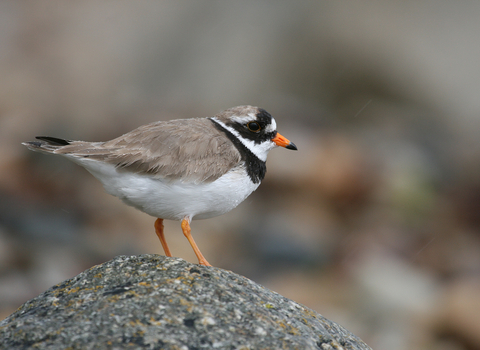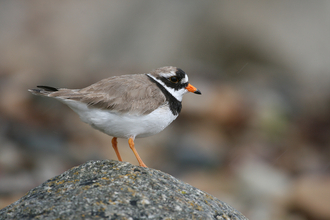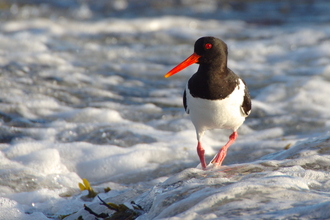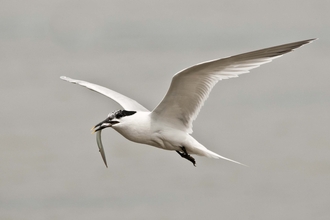Kent is home to some beautiful coastal reserves, many of which are very important sites for nesting birds. Growing numbers of people visiting some of our more remote beaches has hugely impacted birds and their breeding success nationally, but it doesn’t have to be that way.
What do we mean by disturbance?
Disturbance occurs when people or their activities trigger a natural threat response in birds, leading to negative impacts on bird health and their chances of survival.
Birds have evolved a whole range of behaviours to help them survive natural threats and predators. Using these behaviours should be rare as they often result in the bird sacrificing its long-term health or chances of successfully rearing young in order to survive the immediate threat.
For example, when birds sense a threat, their bodies fill with adrenaline and they become very stressed for a short time until they can be certain the threat has passed. When threatened, feeding birds will likely fly away, reducing the amount of time they have left in the day to get all the vital nutrients they need, possibly leading to malnourishment.
Disturbance particularly impacts birds nesting on the ground as adults may be forced to fly up frequently or abandon nests completely. Disturbance can therefore have a serious impact on bird survival rates and can lead to population decline.
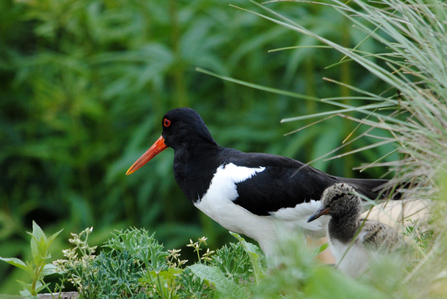
Amy Lewis
Disturbance during spring and summer
During the summer months, many shorebirds nest on beaches. This means that their nests, eggs and young are particularly vulnerable at the same time of year when beaches are particularly busy with humans.
During the breeding season, adult birds work tirelessly to protect their nests and make sure their chicks are well-fed. They are also very wary of predators and the slightest hint of trouble can cause birds to leave their nests, often alerting all the other birds in the area with their alarm calls.
When people or their dogs get too close to breeding birds, birds respond in the same way as they would do to a predator. When frequent disturbance takes place at a beach, these birds may even completely abandon their eggs or chicks. Even low levels of disturbance can cause birds to abandon suitable breeding areas, reducing the breeding success of the species as a whole. Even if the nests are only unattended temporarily, eggs or chicks are at risk of predation, trampling or exposure to the elements.
It is important to remember that all wild birds’ nests and eggs are protected by law and it is illegal to disturb, damage or destroy any nests.
Disturbance during autumn and winter
Each year, huge numbers of birds feed on Kent's shores before migrating South to their wintering grounds. At a similar time, thousands of wildfowl and waders arrive from the far North to spend the winter in our milder climate.
For the birds leaving our shores, they need to spend most of their time feeding to give themselves the energy required for their long journeys.
The birds that over-winter here need to spend the short winter days feeding, resting and saving energy to survive the winter weather. In late winter, they then start to feed up for the long return journey back to their summer breeding grounds.
For all birds, winter can be a tough time. The balance between finding enough food to survive and burning energy to search for that food can be very delicate. Any disturbance that causes them to lose feeding time or burn more energy than is absolutely necessary can tip the scales the wrong way.
It is also worth remembering that some wading birds can only feed when the tide and weather conditions are right and some only have a few months to feed up and gain enough energy to fly thousands of miles. These precious windows of time must be free of disturbance to increase their rates of survival.
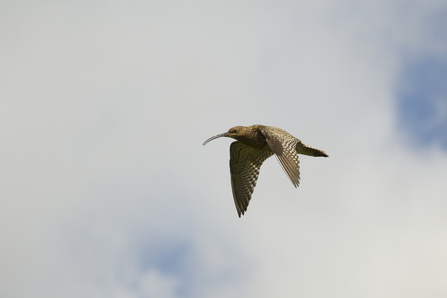
Ben Hall/2020VISION
How we can help these birds throughout the year
Most of Kent’s beaches and coastal reserves are open for people to enjoy and share with wildlife. However, for the birds, it’s their nursery and home. To help our coastal birds thrive by reducing disturbance, we can all:
Check before you go
-
Take the time to learn more about wildlife in the area to improve your enjoyment of the nature reserve and aid conservation efforts.
-
Check if there are any areas closed to the public to protect vulnerable wildlife (such as Shellness and the Mudflats at Sandwich and Pegwell Bay).
-
When you arrive, look out for signs, roped off areas and notices along your path that might warn of areas to avoid to protect birdlife.
-
Listen out for short, sharp alarm calls which may mean you are usually too close to the birds' young or eggs. Birds, and their nests and eggs, can often be camouflaged, so you should turn back the way you came to avoid further risk of disturbing or injuring young.
Dog walking
-
Check where you can walk your dog before you go. There may be byelaws or Public Spaces Protection Orders that prohibit or require dogs to be kept on a lead.
-
In other places, you may have to keep your dog on the lead if asked to do so by Kent Wildlife Trust wardens or the landowner.
-
If you are on the coastline and notice large flocks of birds, you should keep your dog by your side on a lead and take a different route to avoid them. Please don’t let your dog chase them.
-
Keep a respectful distance and help them rest, feed or raise their young in peace.
It is the law that you keep your dog on a lead no longer than 2 metres between 1st March and 31st July when on any open access land to protect ground-nesting birds.
Avoid disturbance by water
-
Follow coastal and river codes and avoid getting too close to resting birds on the coastline. Reduce disturbance from the water by respecting speed limits and minimise wash and noise near breeding sites. Avoid landing anywhere but designated landing sites. Stay away from roosting birds at high tide and do not launch from or land on nature reserves.
Avoid disturbance by air
-
Drone flying is not generally permitted on Kent Wildlife Trust reserves to prevent disturbance.
-
Paragliders should follow the Self Propelled Hang Gliders (SPHG) Code of Conduct for paramotor pilots and pilots of other types of SPHG and avoid flying over bird reserves.
Report Disturbance
-
If you do see evidence of wildlife crime, then please do report this to your local wildlife crime officer using the police 101 number and let Kent Wildlife Trust know.
If you would like to find out more about our amazing shore nesting and wading birds and how you can help protect them, why not join a Kent Wildlife Trust’s coastal bird watching event or Wilder Kent Safari?
We have teams of passionate and knowledgeable wardens who would be happy to show you these birds through a scope or from a safe distance on their reserves.
A few of our coastal bird species:
